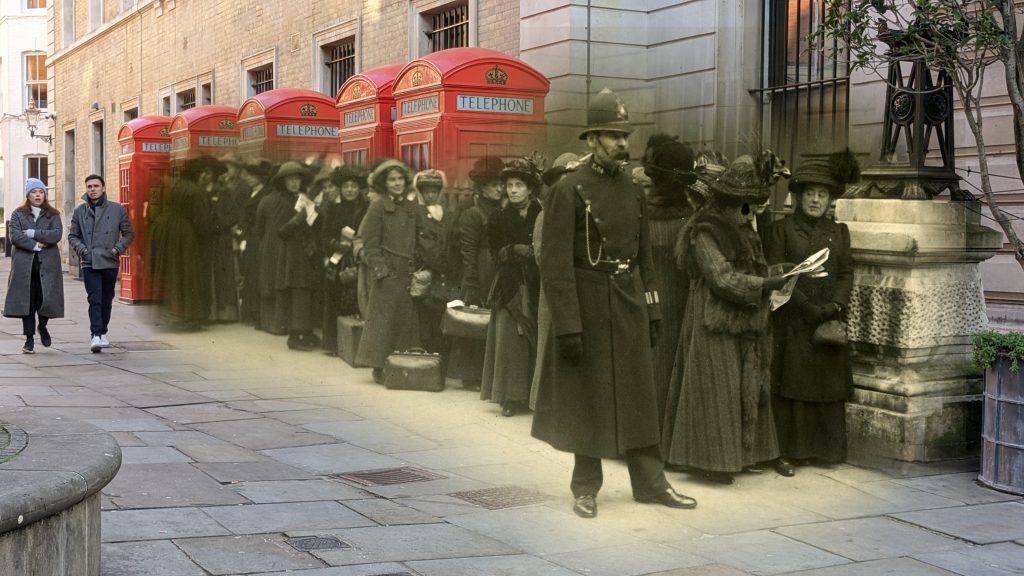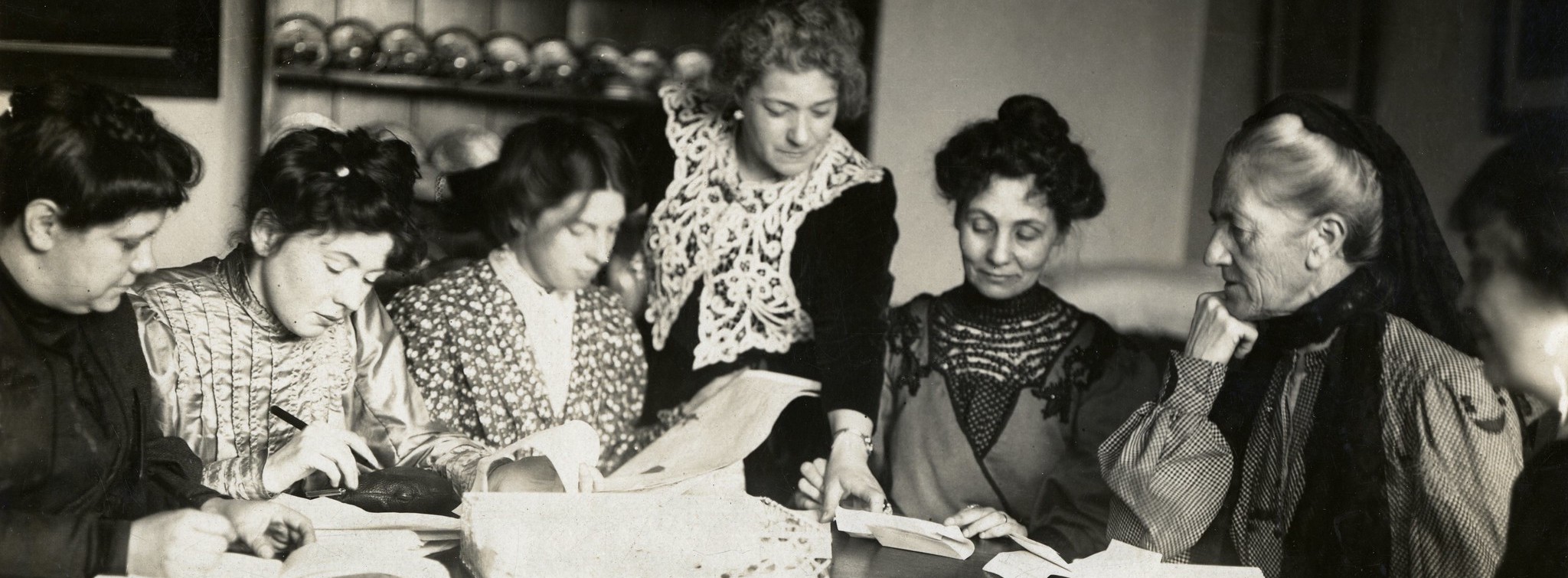Due to its proximity to the head office of the Women’s Social and Political Union at Clement’s Inn, Bow Street became one of the main theatres of the suffragette fight.

This image shows women waiting in a line outside the Bow Street Police Station and Magistrates Court, a place which had become one of the main theatres of the suffragette fight. With the headquarters of the Women’s Social and Political Union (WSPU) just 10 minutes away at Clements Inn, Bow Street was often the closest police station when it came to arresting women for militant actions.
The station found itself particularly busy in 1912, when this image is believed to have been taken. On 1 March the WSPU had organised the second of their big window smashing campaigns in which over 124 women were arrested. Leader Emmeline Pankhurst herself, along with Mabel Tuke and Kitty Marshall, smashed the windows of 10 Downing Street. The following day Pankhurst, Tuke and Marshall were taken to Bow Street Station where they were put on trial. Emmeline Pethick-Lawrence and her husband were also arrested due to their positions as co-leaders of the WSPU, despite not taking part. The court sat for the whole day, trying 13 other women as well, leaving over a hundred women to process.
WSPU’s Votes for Women newspaper spent the next month recounting which women were being charged, tried and sentenced. This extract from Votes for Women on 15 March 1912 read:
On Thursday, March 7, the first case to be taken was that of Miss Sarah Benett, for breaking windows at 101 and 103, Regent Street, value £2 and £2 10s. She said to the magistrate, ‘All reformers have to be rebels, and history will justify us.’
We do not know when in 1912 this image was taken, or whether these women are awaiting charge, or waiting for a glimpse of Emmeline Pankhurst and Emmeline Pethick-Lawrence, but this police station was certainly one of the central arenas of the suffragette fight.





